
Agnes of Rome is a virgin martyr, venerated as a saint in the Catholic Church, Oriental Orthodox Church and the Eastern Orthodox Church, as well as the Anglican Communion and Lutheran Churches. St. Agnes is one of several virgin martyrs commemorated by name in the Canon of the Mass.

Catherine of Alexandria is, according to tradition, a Christian saint and virgin, who was martyred in the early fourth century at the hands of the emperor Maxentius. According to her hagiography, she was both a princess and a noted scholar who became a Christian around the age of 14, converted hundreds of people to Christianity and was martyred around the age of eighteen. More than 1,100 years after Catherine's martyrdom, Joan of Arc identified her as one of the saints who appeared to and counselled her.
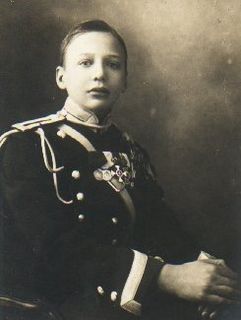
Prince Igor Constantinovich of Russia was the sixth child of Grand Duke Constantine Constantinovich of Russia by his wife Elisaveta Mavrikievna née Princess Elisabeth of Saxe-Altenburg.
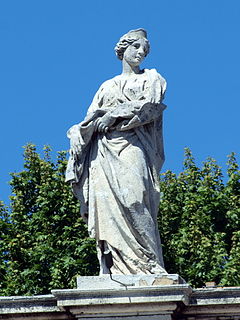
Balbina of Rome, sometimes called Saint Balbina and Balbina the Virgin is venerated as a virgin martyr and saint of the Catholic Church.

Saints Victor and Corona are two Christian martyrs. Victor was a Roman soldier who was tortured and killed; Corona was killed for comforting him. Corona is invoked as a patron of causes involving money; she was not historically associated with pandemics or disease, but has been invoked against the coronavirus pandemic.

Saint Moura, also known as Mart Moura, is a Christian martyr of the third century and is honored in Egypt and the Middle East. Her feast is celebrated on 3 May and on 25 September, 5 Hathor and 8 Pashons in the Coptic church. Several churches are dedicated to her, especially in northern Lebanon, as well as a monastery in Ehden.

Hripsime, also called Rhipsime, Ripsime, Ripsima, Ripsimia, Ripsimus, Arbsima or Arsema was a martyr of Roman origin; she and her companions in martyrdom are venerated as some of the first Christian martyrs of Armenia.

The Master of Affligem or Master of the Joseph Sequence was an accomplished painter of the South Netherlandish school, apparently working in Brussels, whose name is not known, but whose hand can be detected in a number of surviving paintings on panel. The pseudonym Master of the Joseph Sequence was given him as a name of convenience in 1923 by Walter Friedländer, who identified a series of tondi illustrating the Legend of St Joseph, which had become scattered among several museums, as all coming from the same painter. Subsequently Friedländer attributed to the same workshop eight further panels with scenes from two other sequences, the Life of Christ and the Life of the Virgin These came from the abbey of Affligem in Brabant, providing the alternate name for the artist.

Dorothea of Caesarea is a 4th-century virgin martyr who was executed at Caesarea Mazaca. Evidence for her actual historical existence or acta is very sparse. She is called a martyr of the late Diocletianic Persecution, although her death occurred after the resignation of Diocletian himself.
Saint Mohrael (Ge'ez-ሙራኤል) is a Coptic Saint and Martyr. She was martyred in the 4th century AD at the age of 12 years.
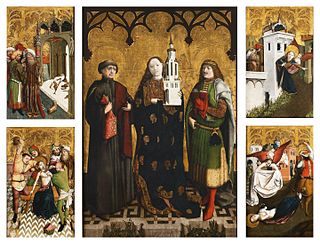
Saint Barbara, known in the Eastern Orthodox Church as the Great Martyr Barbara, was an early Christian Lebanese and Greek saint and martyr. Accounts place her in the 3rd century in Heliopolis Phoenicia, present-day Baalbek, Lebanon. There is no reference to her in the authentic early Christian writings nor in the original recension of Saint Jerome's martyrology.

Portraits of the Apostles are a common subject in Christian art and serve as a devotional tool for many Christian denominations. The Twelve Apostles were instrumental in teaching the gospel of Jesus, “continuing the mission of Jesus” with their depictions continuing to serve as spiritual inspiration and authority. Many Protestant denominations reject religious imagery, including the veneration of the apostles and other religious figures.
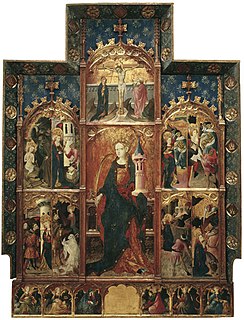
The Altarpiece of Saint Barbara is a painting by Gonçal Peris conserved at the National Art Museum of Catalonia.
Events from the year 1525 in France
Events from the year 1597 in France

Perpetua and Felicity were Christian martyrs of the 3rd century. Vibia Perpetua was a recently married, well-educated noblewoman, said to have been 22 years old at the time of her death, and mother of an infant son she was nursing. Felicity, an enslaved woman imprisoned with her and pregnant at the time, was martyred with her. They were put to death along with others at Carthage in the area of Africa in the Roman province of Africa.
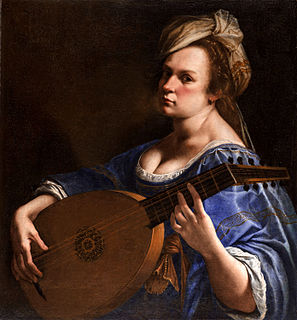
Self-Portrait as a Lute Player is a painting by the Italian baroque artist Artemisia Gentileschi. Executed between 1616 and 1618, it hangs in the Wadsworth Atheneum Museum of Art, Hartford, Connecticut, US.
Several Reliquaries of Saint Thomas Becket were produced by the Limoges enamellists in the 1200s to house relics of Thomas Becket.
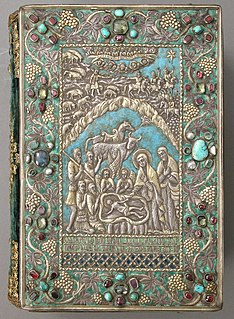
The Metropolitan Museum of Art holds an Armenian-made illuminated gospel in its collection. Created in the 13th and 17th centuries, the gospel features elaborately executed metalwork decorations, and is adorned with gems and enamel.

Cypresses is a late 19th-century painting by Dutch artist Vincent van Gogh painted around June 1889. Done in oil on canvas, the painting depicts a pair of cypress trees in the French countryside. The work is currently on display in the Metropolitan Museum of Art.
















